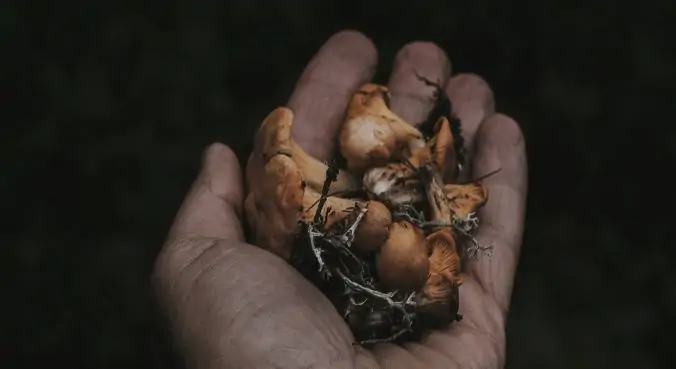By: Jon Johnson, Medical News Today
Shrooms are a common name for hallucinogenic mushrooms containing the compound psilocybin. They may show up on specific drug tests designed to detect hallucinogens, but many standard drug tests do not test for these compounds.
Because the body processes the mushrooms and their compounds relatively quickly, specific drug tests may need to take place promptly after ingestion for them to find any traces of the drug.
Keep reading to learn more about shrooms and drug tests, including how long they stay in the system, and some ways people could be able to “flush them” out quicker.
Do shrooms show up on a drug test?
Drug tests do not usually look for shrooms. These drugs do not show up on many of the tests involved in common or everyday purposes, such as screening job applicants.
However, while many standard panel tests will not detect mushrooms, there are specialized tests that will.
Information from the Drug and Alcohol Testing Industry Association notes that hallucinogen tests may include markers for:
- LSD
- mushrooms
- mescaline
- peyote
The body metabolizes these types of compounds relatively quickly. However, a person may need to undergo hallucinogen tests for certain occasions, for example, if they appear to be under the effect of these substances at the time.
There may also be a risk of magic mushrooms becoming contaminated by other detectable drugs. Hypothetically, an untrustworthy vendor may contaminate common mushrooms with other drugs, which a drug panel test could then pick up.
Urine drug tests
The Substance Abuse and Mental Health Services Administration (SAMHSA) note that urine tests are in common use and screen for five categories of drugs, including:
- cannabis
- cocaine
- amphetamines
- opiates
- phencyclidine, or PCP
People often refer to this as the five-panel test.
Other screenings may include more panels, which involves testing for categories such as:
- barbituates
- alcohol
- benzodiazepines
- MDMA
- propoxyphene
- methadone
- methaqualone
Hair follicle drug tests
Some tests can check for compounds, such as hallucinogens, over a more extended time.
For example, hair follicle testing could detect these compounds for as long as 90 days. However, these screenings have a higher cost and may not be as common as urine tests. SAMHSA note that federally-regulated programs currently only collect and test urine.
How long do shrooms stay in the system?
After ingesting hallucinogenic mushrooms, the body breaks them down into their active components, such as psilocybin and its active form, psilocin. These compounds act on the brain to produce changes in perception and behavior.
However, the entire process is relatively quick:
- Changes in emotion, perception, and consciousness can start in as little as 20–30 minutes after ingestion. The changes can last for several hours, depending on numerous factors such as the dose and the individual.
- At the same time, the body begins processing the compounds quickly. The kidneys excrete the compounds, which then leave the body in the urine.
- The half-life of a drug is how long it takes the body to break down or excrete half the total amount a person ingests. With this in mind, the half-life of psilocin is 50 minutes.
- About 66% of the compounds get excreted from the body within 3 hours.
- After 24 hours, the compounds are no longer detectable in the urine.
Several individual factors may affect these timings, such as:
- Dosage: A higher dosage may remain in the body for longer as it takes more time to break down.
- Potency of the shrooms: More potent mushrooms may have more active compounds, making them last longer in the body.
- Type of mushrooms: There are a variety of hallucinogenic mushrooms, each with its own composition that may affect how long it stays in the body.
- Personal tolerance level: Taking some compounds regularly or in larger dosages to feel the same effects may increase the time they take to leave a person’s system.
- Preparation method and form: How a person prepares shrooms, for example, dried or in tea, may affect their potency and subsequent excretion time.
Any food or drink taken with the mushrooms: Factors that affect digestion, such as eating shrooms with other foods or on an empty stomach, may affect the time it takes for them to leave the body. - Metabolism: An individual’s metabolism may affect how quickly the compounds leave the body. Several other factors may influence a person’s metabolism, such as age and body composition.
- Disorders in the kidney: A kidney with reduced function may take more time to metabolize and excrete these compounds.
Johnson, J. (2021). Shrooms and drug tests: What to know. Medical News Today. https://www.medicalnewstoday.com/articles/do-shrooms-show-up-on-a-drug-test



